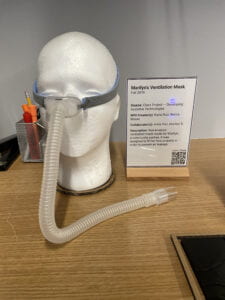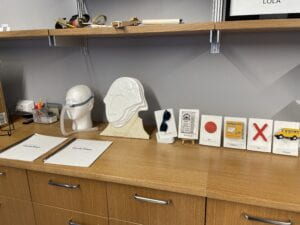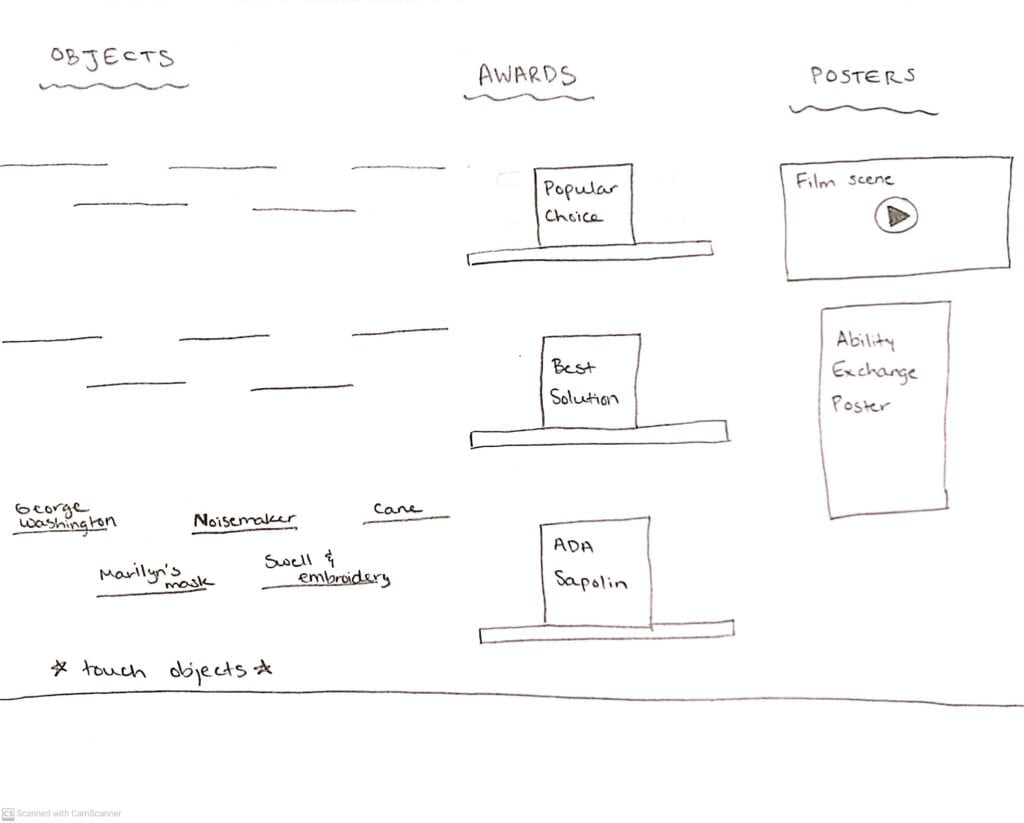AP Weekly Update
On this page
- Update 1: Project Goals
- Update 2: Competitive Analysis
- Update 3: Gathering Information
- Update 4: Finalizing Details
- Update 5: Reaching Out to Resources
- Update 6: Midterm Presentation
- Update 7: Moving Forward with the Website
- Update 8: Purchasing Stands to Hold Objects
- Update 9: Making Labels for Museum Items
- Update 10: Finalizing AP Museum Website
Weekly Update 10: 4/25/23 (Finalizing ap museum website)
Using Google Sites, our team built and published a website for the AP Museum that features all of the museum projects from 2019 to 2022. The website shares information about the museum and also links back to the original AP website for further reference. We also included information such as contact info for visitors to reach out to Amy and Anita with questions regarding projects submissions and a link to join the AP Google Space. Each of the museum items, objects, and awards have their own web pages that are linked to from the QR codes featured on the museum labels. From there, the web pages link to a full process of the project on the original AP site.
Weekly Update 9: 4/18/23 (Making labels for museum items)
Using Google Slides, we created several iterations of potential labels to display for each showcased item in the museum. We made sure to include information such as object title, source, NYU creator(s)/designers(s), date created, collaborators, and description. We finalized details such as large font size for easier readability, sufficient spacing, and minimal color to avoid inefficient color contrasts. In addition to designing the labels, we also needed a stand to help the label stand upright for visitors to read easily. As a result, Amy purchased these 5×7 inch table tents in which to showcase each label and switch out the labels easily whenever changes were necessary.

Weekly Update 8: 4/11/23 (Purchasing stands to hold objects)
To hold objects, such as projects and awards, upright for visitors to see clearly, we decided to purchase stands in which to place the museum items. We chose to order this 10-pack acrylic display stand from Amazon and tested them out on a variety of objects. We found that they worked well with the museum items that consisted of more weight, such as the George Washington tactile portrait, cardsets, and award frames. However, paper materials such as the spiral-bound booklet on tactile objects proved too flimsy to stand up straight in the display stands. To accommodate this issue, we decided to place such objects directly on the countertop facing up and agreed on the idea to create cardboard placeholders to remind visitors where to return each object after viewing.

Weekly Update 7: 4/4/23 (Moving foward with the website)
In response to the feedback our team received following our midterm presentation last week, our group will discuss our plans moving forward regarding the AP Museum website build as well as our progress with the physical space. We may delegate various responsibilities to team members accordingly and create wireframes that help determine the layout of the website and how users can submit their work to the Museum.
Weekly Update 6: 3/28/23 (midterm presentation)
Midterm Presentation: https://wp.nyu.edu/ap_classes_museums_s23/projects/midterm/
Weekly Update 5: 3/21/23 (reaching out to resources)
This week, our team reached out to Beth Rosenberg to learn more about some AP museum objects that we were currently missing information about, such as the Autism Speaks Award and Tech Kids Marilyn Miller-Morell Advocacy Award (2019). We heard back from Beth regarding further context about Tech Kids Unlimited’s acceptance of the Autism Speaks Award and will update our description for the award display accordingly. We also confirmed whether we have the correct website link and information with which to reference the Tech Kids award in our display.
Weekly Update 4: 3/7/23 (finalizing details)
To help fill in missing details and more information regarding each museum object, our team met with Anita last class and found out more about certain objects’ descriptions and source contacts. We are continuing to sketch out possible layouts of the physical space and plan to decide on the best organization of the space for the objects to be displayed.

Weekly Update 3: 2/28/23 (INFORMATION GATHERING)
Once again, our team met with Anita last class to discuss updates and gathered details and information regarding each museum item—including each item’s title, category, source, collaborator, image, and description.
We created an inventory of all of the objects, projects, and photos that will be displayed in the museum. As part of our next steps, our team will iterate and create sketches and mockups of the physical space/layout of shelves, description labels, and website design.
Weekly Update 2: 2/21/23 (Competitive Analysis)
Our team concluded our first meeting with Anita last class. We discussed requirements and possible solutions for organizing the Ability Project Museum space:
- Qr codes for digital object, author, date
- Grey wall is off limits
- Objects, pictures, books
- Big space and shelves
- Think about how to organize item, make labels (braille on back), descriptions, link to museum web page
Possible Object Examples
- Walking Cane
- Take size of cane into consideration
- Include a possible illustration of how to use the cane
- Hang on wall using 3d-printed horizontal or vertical hook
Awards/Pictures
- Name of the award, year, organization, QR code, explanation of where they came from on the website
- Autism Speaks is controversial, may choose to add a footnote under this section of the museum
- Film poster: QR code, describe the film, monitor of scrolling images from film (descriptions and captions), scene from the film
- Card that says Ability Project Museum, url, QR code
- Less engaging things on top shelf, with labels
- More aesthetically pleasing container for flyers, brochures
Possible Ways to Categorize Items
- Classes, research, Tech Kids
- Objects, awards, pictures (vertically)
- Touchable objects on lower level, more fragile objects on top level
Weekly Update 1: 2/14/23 (Goals)
- Team AP Project
- Main student point of contact: Laura Lachin (lbl8408@nyu.edu)
- Regular meeting time: Thursday afternoons
- Description of the project: In order to build a successful infrastructure for the Ability Project Museum, our team is tasked with designing labels with tangible QR codes, creating a companion website for digital content, showcasing display(s) in the room, building “mounts” for objects, including signage for space, setting up a submission process for potential creations, and displaying descriptions for each creation with attributions to its designer/collaborator and link to digital file.